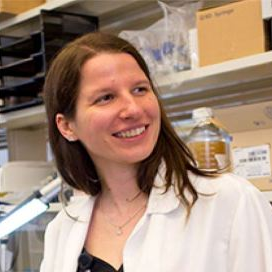Advances in Immuno-Oncology Research
A special issue of Cancers (ISSN 2072-6694). This special issue belongs to the section "Cancer Immunology and Immunotherapy".
Deadline for manuscript submissions: closed (20 July 2022) | Viewed by 56331
Special Issue Editor
Special Issue Information
Dear Colleagues,
Discoveries in the field of cancer immunology and progress in immunotherapy as a first line therapy have great potential to deliver a potential cure for advanced cancer. Understanding the common mechanisms of tumorigenesis, including changes in tumor microenvironment, immune evasion, and anti-tumor immune responses, is pivotal for further development of novel therapeutics. The current COVID-19 pandemic further illustrates the need for understanding the basic mechanisms of immune responses or inflammation as they relate to viral responses and vaccines. Specifically, mRNA vaccines might be a promising platform for cancer immunotherapy.We invite authors to submit their original or review work to the Special Issue entitled "Advances in Immuno-Oncology Research" as it relates to immune responses in tumor biology with focus on the following:
-Tumor microenvironment
-Immunotherapy and CAR T cell therapy
-Novel targets in cancer cells
-Infection and sterile inflammation in cancer biology
-COVID-19 and cancer
-Cancer vaccines
Dr. Barbara Wegiel
Guest Editor
Manuscript Submission Information
Manuscripts should be submitted online at www.mdpi.com by registering and logging in to this website. Once you are registered, click here to go to the submission form. Manuscripts can be submitted until the deadline. All submissions that pass pre-check are peer-reviewed. Accepted papers will be published continuously in the journal (as soon as accepted) and will be listed together on the special issue website. Research articles, review articles as well as communications are invited. For planned papers, a title and short abstract (about 100 words) can be sent to the Editorial Office for announcement on this website.
Submitted manuscripts should not have been published previously, nor be under consideration for publication elsewhere (except conference proceedings papers). All manuscripts are thoroughly refereed through a single-blind peer-review process. A guide for authors and other relevant information for submission of manuscripts is available on the Instructions for Authors page. Cancers is an international peer-reviewed open access semimonthly journal published by MDPI.
Please visit the Instructions for Authors page before submitting a manuscript. The Article Processing Charge (APC) for publication in this open access journal is 2900 CHF (Swiss Francs). Submitted papers should be well formatted and use good English. Authors may use MDPI's English editing service prior to publication or during author revisions.
Keywords
- tumor microenvironment
- immunotherapy and CAR T cell therapy
- novel targets in cancer cells
- infection and sterile inflammation in cancer biology
- COVID-19 and cancer
- cancer vaccines
Benefits of Publishing in a Special Issue
- Ease of navigation: Grouping papers by topic helps scholars navigate broad scope journals more efficiently.
- Greater discoverability: Special Issues support the reach and impact of scientific research. Articles in Special Issues are more discoverable and cited more frequently.
- Expansion of research network: Special Issues facilitate connections among authors, fostering scientific collaborations.
- External promotion: Articles in Special Issues are often promoted through the journal's social media, increasing their visibility.
- e-Book format: Special Issues with more than 10 articles can be published as dedicated e-books, ensuring wide and rapid dissemination.
Further information on MDPI's Special Issue polices can be found here.






